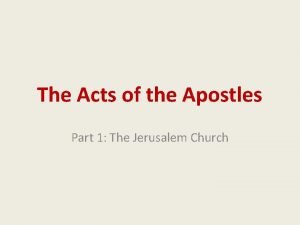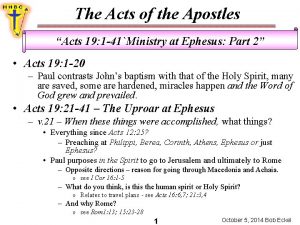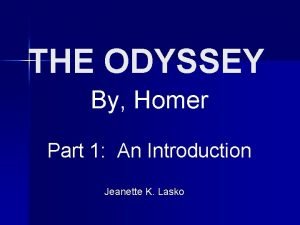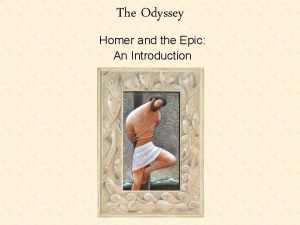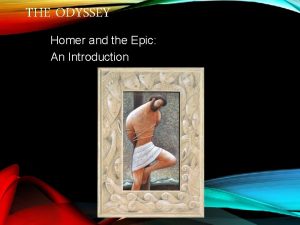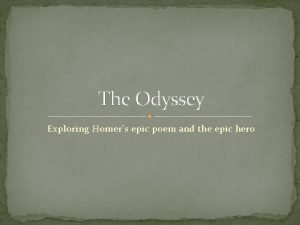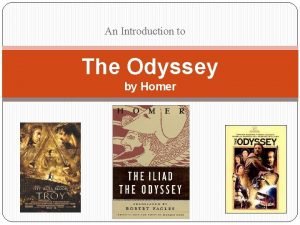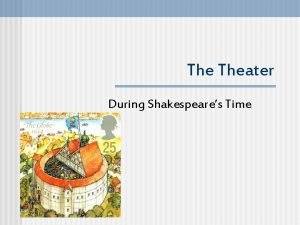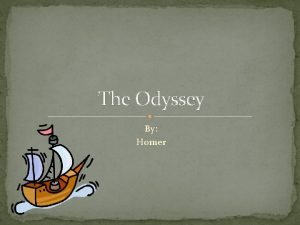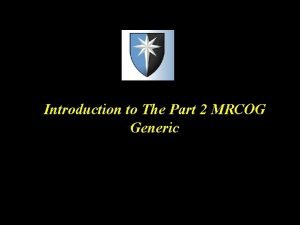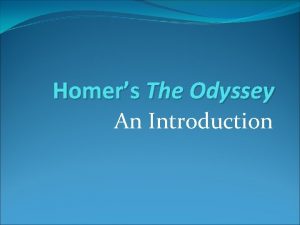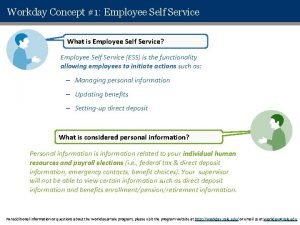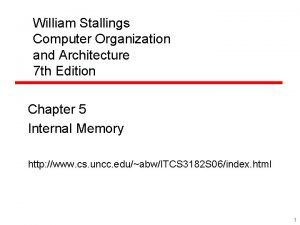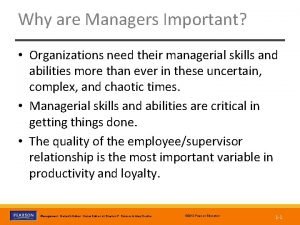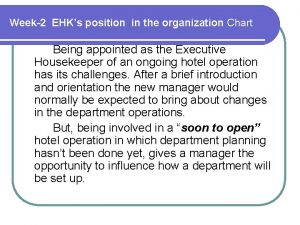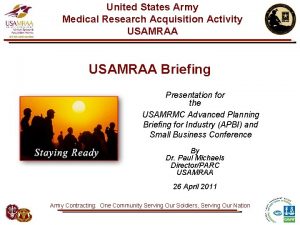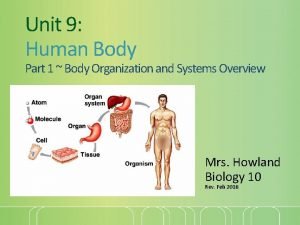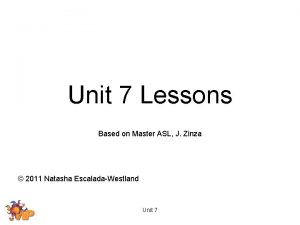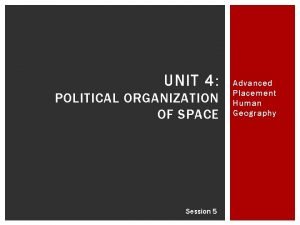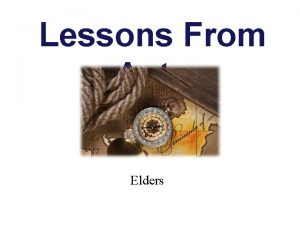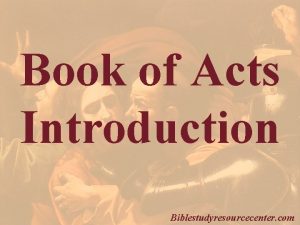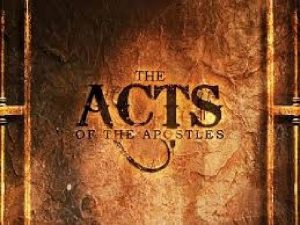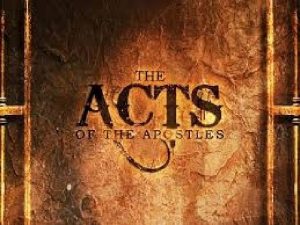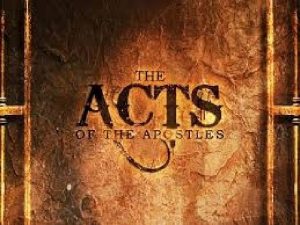Introduction to Acts Part 1 ORGANIZATION OF ACTS




















































- Slides: 52

Introduction to Acts Part 1


ORGANIZATION OF ACTS Appreciate the growth of the early church and why.

Understand how people became Christians in st the 1 century Can we follow their example today?

Examine the role of the Holy Spirit in Acts

Overview of Acts

Summary: • The story of Christians from the resurrection of Christ to the first missionary efforts primarily by Peter and Paul the Apostles • Written by Luke

Title Author Date period & Chronology apparent purposes

Importance and place Several ways of analysing acts Several outlines

mmost common title The acts of the apostles

Title: n The Title was man made not God inspired. Some have said that the book of Acts would better be named “Some of the Acts of some of the Apostles” or “Acts of the Holy Spirit”.

Most accurate title some of the acts of some of the apostles

Author: n According to verse 1 the author describes himself as having written a former book. An examination and comparison to the book of Luke indicates that Luke was the author of both books. Luke describes himself as being an eyewitness to some of this by using the pronoun “We” such as in 16: 10 -13.

Companion of Paul Tradition has him a native of Antioch in Syria though it seems Paul first met him on his third missionary journey at Troas on the western coast of Asia Minor (Turkey) on the Adriatic Sea (Acts 16). n From that point until Paul leaves Philippi and Macedonia to go to Achaia, the narrative speaks of Paul and his companions as “we. ” n

HE REJOINS PAUL AND HIS ENTOURAGE AT PHILIPPI n He rejoins Paul and his companions later when they return through Macedonia (Acts 20) collecting the gifts of the Gentile churches to take to the churches of Judea to help combat the effects of the predicted famine (Acts 11: 27 -30; Galatians 2: 9 & 10; 2 Corinthians 8 & 9; Romans 15: 26 & 27).

PROBABLY WITH PAUL TO THE END He travels with Paul and his other companions to Jerusalem on this mission and is with Paul during his imprisonment at Caesarea. n He then traveled with Paul when Paul went as a prisoner to Rome. n He seems to have remained with Paul until the end of his ministry (2 Timothy 4: 11; Philemon 24). n

Author: n There is no serious doubt among Bible scholars and historians that the human author of this book of early church and apostolic history was Luke, the beloved physician, constant companion of the Apostle Paul and author of the gospel of Luke Working as a Physician

AUTHOR? Almost unanimous conclusion Luke and the Holy Spirit

INTERESTING THINGS ABOUT LUKE Probably a gentile He was a doctor He was an accurate historian

LUKE’S PHYSICAL REMAINS n A marble lead-lined sarcophagus or coffin containing bones of a skeleton and two teeth, but with the skull missing has been identified with high probability as those of Luke the physician, evangelist and historian. Luke’s Teeth?

PROBABLY A SYRIAN Analysis of the DNA of the teeth suggests that its owner came from the region of Antioch, Luke’s purported home area, and was a Syrian, not a Greek. n Analysis and carbon dating of the bones indicate that the remains were of a male of about 84 -86 years who died between 72 AD and 416 AD. n Luke is thought to have died in Thebes or Patras, Greece in about 150 AD. n

n n His body was taken to Constantinople in 338 AD and later moved to Padua, Italy. The location of the skull is known and has been found to fit the top of the spine exactly. There are other evidences that we will not go into here. But if you are interested in reading further on the subject, please go to this web site: http: //www. telegraph. co. uk/news/main. jhtml? x ml=/news/2001/10/21/wluke 21. xml

PHYSICIAN AND HISTORIAN n n n Luke was a physician and historian who was in the Land of Israel at least two years staying near Paul when Paul was in the jail at Caesarea. He had ample time to research the facts of the gospel story since most of the eyewitnesses of the events were still alive and living in Palestine. Also a prophet, his writing is quoted as “scripture” by Paul (1 Timothy 5: 18; Luke 10: 7).

FOR THEOPHILUS He addresses both his gospel and the Book of Acts to a man who seems to have had some political authority or was a member of the nobility of Greece, Rome or Syria. n An early tradition has him the governor of Achaia. That he was a person in some position of power is indicated by the phrase by which Luke addresses him, “Most Excellent Theophilus” in Luke 1: 3 (Compare Acts 24: 3 and 26: 25). n

FOR THEOPHILUS n n “Theophilus” is a Greek word that means “One Who Loves God. ” That fact has led some to believe that Luke is actually addressing his two treatises to every person who loves God. It is certain that only the person who loves God will want to believe and obey Him. It is also obvious that the book had an intended readership beyond a single individual.

Acts is demonstrated by its unity to be the work of one author. It is unified by diction and style and by the leading ideas throughout; It’s doctrinal unity is rarely questioned.

DATE OF WRITING PERIOD COVERED AND CHRONOLOGY

Acts 12: 23; king Agrippa died 44 AD Acts 11: 28; famine 46 AD

Date: Likely AD 62 to AD 64. Paul not yet killed and temple not recorded as being destroyed. n It seems unlikely that the book would have not mentioned the destruction of Jerusalem in 70 AD if it had yet happened. n Acts 1: 19 talks of Jerusalem as though it has not yet been destroyed. Scofield believes that this book covers the first 32 years after the death of Christ. n

We conclude that the book was written around 62 - 64 A. D.

Historical period Covered in the book of Acts 29 to 33 years

“He lived there two whole years at his own expense welcomed all who came to him, preaching the kingdom of God and teaching about the Lord Jesus Christ quite openly and unhindered”

So we have approximately 29 -30 years from the ascension of Christ (33 A. D. ) to Paul's second year in prison (62 -63 A. D. ).

ROMAN EMPERORS Tiberius (14 -37 AD) CALIGULA (37 -41) CLAUDIUS (41 -54) NERO (54 -68)

Recipients: n n Early Christians Us!

Short Outline: Acts Chapters 1 -9 Peter is Prominent. n Acts Chapters 1028 Paul is Prominent n

AN APPROXIMATE CHRONOLOGY

A. D. 33 Establishment of the church in Jerusalem 1 -6

A. D. 35 Stoning of Stephen Dispersion of the church 7 -8

A. D. 35 Conversion of Saul 9

A. D. 38 Paul’s first visit to Jerusalem after his Conversion 9

A. D. 40 Conversion of Cornelius the Gentile 10

A. D. 42 Reception of the Gentiles into the church at Antioch 11

A. D. 44 Paul’s second visit to Jerusalem 12

A. D. 45 -48 First evangelistic journey (Paul and Barnabus) 13 - 14

A. D. 50 Meeting at Jerusalem 15

A. D. 50 -53 Second evangelistic journey (Paul and Silas) 16 - 18

A. D. 54 -57 Third evangelistic journey (Paul) 19 - 20

A. D. 58 Paul reached Jerusalem 20 - 23

A. D. 58 -60 Paul in Caesarea 24 - 26

A. D. 60 -61 Paul’s voyage to Rome 27 - 28

A. D. 61 -63 Paul in Rome For two years 28
 Process organization in computer organization
Process organization in computer organization Block organization
Block organization Give at least 4 modifiers of the human acts
Give at least 4 modifiers of the human acts Things fall apart epigraph
Things fall apart epigraph The acts of the apostles part 1 worksheet answers
The acts of the apostles part 1 worksheet answers Lesson 19 the acts of the apostles part 1
Lesson 19 the acts of the apostles part 1 Part whole model subtraction
Part whole model subtraction Unit ratio definition
Unit ratio definition Part part whole
Part part whole What is technical description
What is technical description Sorry bar
Sorry bar The part of a shadow surrounding the darkest part
The part of a shadow surrounding the darkest part Two way anova minitab 17
Two way anova minitab 17 Introduction to computer organization and architecture
Introduction to computer organization and architecture Introduction of an organization
Introduction of an organization Introduction to computer organization
Introduction to computer organization Chapter 1 introduction to management and organizations
Chapter 1 introduction to management and organizations Introduction to business organization
Introduction to business organization Famous epic poem by homer
Famous epic poem by homer The odyssey and epic poetry: an introduction, part 1
The odyssey and epic poetry: an introduction, part 1 The odyssey and epic poetry: an introduction, part 1
The odyssey and epic poetry: an introduction, part 1 Hamlet part 1 an introduction to elizabethan theater
Hamlet part 1 an introduction to elizabethan theater A great introduction
A great introduction The odyssey and epic poetry: an introduction, part 1
The odyssey and epic poetry: an introduction, part 1 The odyssey and epic poetry an introduction part 1
The odyssey and epic poetry an introduction part 1 Homers epic poem
Homers epic poem The odyssey and epic poetry: an introduction, part 1
The odyssey and epic poetry: an introduction, part 1 Hamlet, part 1: an introduction to elizabethan theater
Hamlet, part 1: an introduction to elizabethan theater Tybalt act 1 scene 1
Tybalt act 1 scene 1 The odyssey and epic poetry an introduction part 1
The odyssey and epic poetry an introduction part 1 Rcog training portfolio
Rcog training portfolio The odyssey and epic poetry an introduction part 1
The odyssey and epic poetry an introduction part 1 The odyssey and epic poetry an introduction part 1
The odyssey and epic poetry an introduction part 1 Body paragraph
Body paragraph Six traits
Six traits Function of world trade organization
Function of world trade organization World nature organization is located in
World nature organization is located in My workday yale
My workday yale Non profit organization mission
Non profit organization mission Computer organization and architecture 10th solution
Computer organization and architecture 10th solution Pentium 4 cache organization
Pentium 4 cache organization Semiconductor ram memories in computer organization
Semiconductor ram memories in computer organization Role of business manager in an organization
Role of business manager in an organization What is a organization
What is a organization Organization chart of large hotel
Organization chart of large hotel Ripple carry adder virtual lab
Ripple carry adder virtual lab Steele arbeeny
Steele arbeeny Us army medical research acquisition activity
Us army medical research acquisition activity Sequential organization
Sequential organization Processor organization
Processor organization Cells human body
Cells human body Days of the week asl
Days of the week asl Supranational organization examples
Supranational organization examples




